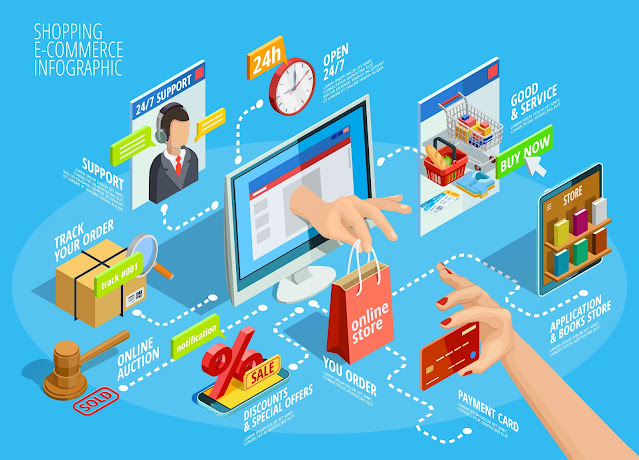Guide to E-Commerce Customer Services – 3 Best Practices to Know | DK Business Patron
In the digital world, excellent customer service is considered a vital source of customer loyalty. As more and more people are inclined toward online shopping, e-commerce sales are expected to increase in the upcoming years. Sounds interesting, isn’t it?
But how would you handle multiple customer
concerns? The best answer is to outsource your e-commerce account helpservice to respond well to your customers and provide flexible
multi-channel customer support. Alongside optimized user experience, customers
appreciate a high engagement rate and that’s why it is crucial to learn best
practices to resolve issues across various channels.
Why Outsource E-Commerce
Customer Service?
Based on the market and customer data report
of Statista, more than two billion people globally have purchased products/ or
services online in 2021. Thereby, you have a lot to do to boost productivity,
manage inventory, and implement proven strategies to meet customer demands.
Outsourcing partners can help bridge the gap between your brand and
customers.
·
Organized Customer Service – Keeping track of customer transactions via a team well-versed
with support tools can be useful to ensure the right order.
·
Multi-Channel Presence – Wherever your potential customers are, the team will find them
via various channels like social media, email, websites, and many others.
·
Automated Processes – By taking advantage of technology, you can ease business
processes and interactions while customer service experts can focus on other
crucial aspects.
·
Real-Time Support – you can meet customers’ satisfaction through prompt responses
from e-commerce call center representatives.
Best Practices for E-Commerce
Customer Service
1. Provide multi-channel support – Each channel
has its own strengths and weaknesses. To take full advantage, evaluate which
channel will give you superior results. Direct support via chat can be
preferable but social media is always a better choice.
2. Personalize support and marketing – It is
possible to track and evaluate customer behavior via all activities, ranging
from browsing to buying and customer service. This means when a customer
reaches out for support, an agent will have access to key information, such as
purchase history, interests and needs to meet their unique requirements.
3. Give self-service support – Customers can
easily help themselves through a help center, which includes relevant answers
to FAQs, return policies, and others.
Customer Service Plays a
Significant Role in E-Commerce Business Success
As customers’ demands and expectations are
growing when it comes to the online shopping experience, it is important to
stay connected with your customers to increase brand awareness and credibility.
Redefining the online buying journey, implementing the best practices, and
focusing more on outsourcing customer service build lifetime value and pay
dividends across various parameters.




Comments
Post a Comment